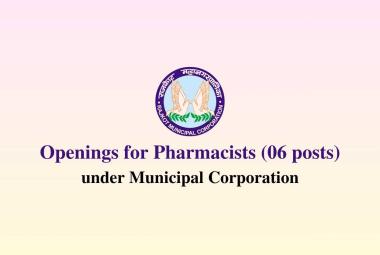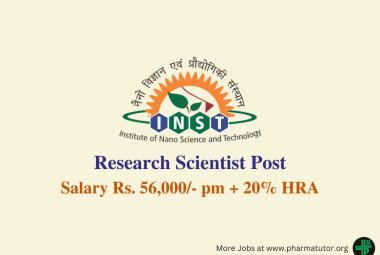About Authors:
Enegide Chinedu*, David Arome, SolomonF. Ameh
Department of Science Laboratory Technology (Physiology & Pharmacology Technology),
University of Jos, Jos Nigeria.
chinex.snow@gmail.com
Abstract
Phytochemicals are referred to as pharmacologically active substances which are naturally present in plants. However, the effects of various plant preparations in the body when administered, is dependent on the phytochemicals present. Herbal medicine have been said to be the oldest form of medicine and have of recent even gained new momentum due to its advantages.The World Health Organization has recognized that traditional herbal plants may be useful in an integrated health care deliverysystem in several countries. But however to achieve the goal of using both herbal medicine and modern medicine paripassu, there is need for the phytochemical assessment of the plants coupled with pharmacological and toxicological investigations as well. Therefore, the aim of this research is to evaluate the phytochemicals present in the aqueous and ethanolic extracts of some herbal plants in Jos, Nigeria. This study have unveiled the presence of various phytochemcals in the different plant extracts examined. The various phytochemicals present in the extracts includes alkaloids, saponins, tanins, flavonoids, carbohydrates, steroids, cardiac glycosides and anthraquinones. These phytochemicals are known to posses therapeutic and also physiological activity. The test have shown that the plants are useful as they contain phytochemicals capable of producing valuable pharmacological effects. However, further studies aimed at establishing the dosage in which the may produce their pharmacological effects and toxicity should be done. Studies aimed at isolating the phytochemicals and screening their individual effects will also be very useful.
REFERENCE ID: PHARMATUTOR-ART-2037
INTRODUCTION
Phytochemicals are referred to as pharmacologically active substances which are naturally present in plants. To the plants in which they are present, the phytochemicals may serve as natural defence system, may even give flavor, aroma or colouration to the plant. [1] However, the effects of various plant preparations in the body when administered, is dependent on the phytochemicals present. Herbal medicine have been said to be the oldest form of medicine and have of recent even gained new momentum due to its advantages. [2, 3] The World Health Organization has recognized that traditional herbal plants may be useful in an integrated health care deliverysystem in several countries. It has however been stated that such plants should not be dangerous but rather highly safe. And also, the plants should be effective, while preparations made from them must be free from microbes and unadulterated. [4, 5] These statements have arisen due to the fact that remarkable success have been achieved in use of herbal medicine for the treatment of several ailments especially in regions where modern medicines are not easily accessible. But however to achieve the goal of using both herbal medicine and modern medicine paripassu, there is need for the phytochemical assessment of the plants coupled with pharmacological and toxicological investigations as well. This is with the objective of knowing the phytochemical constituents present and responsible for the pharmacological activities of various herbal formulations, as well as standardising them (the herbal formulations). Therefore, the aim of this research is to evaluate the phytochemicals present in the aqueous and ethanolic extracts of some herbal plants in Jos, Nigeria. The plants, extract under investigation and traditional uses are documented in table 1 below.
Table 1: Plants, their traditional uses and extract under investigation
|
Plant |
Family |
Plant Part |
Extract |
Traditional uses |
|
Cymbopogoncitratus |
Poaceae |
Leaf |
Aqueous |
Used as cough remedy, anti-pyretic, stimulant and antispasmodic agents.
|
|
Solanumvirginianum |
Solanaceae |
Fruit |
Aqueous |
Used for the treatment of epilepsy, sore throat, rheumatism and gonorrhoea.
|
|
Bauhinia purpurea |
Fabaceae |
Leaf |
Aqueous |
It is used as antibacterial, diarrheal,anti-diabetic, analgesic, anti-inflammatory, anti –anticancer and nephro-protective agents, and also for regulatingthyroid hormone activity.
|
|
Allium cepa |
Amarylidaceae |
Back |
Methanolic |
Used in the treatment of snake bite, ulcer and as spice for cooking.
|
|
Mangifera indica |
Anacardiaceae |
Back |
Methanolic |
Used for the treatment ofdiarrhea, dysentery and chronic urethritis from gonorrhoea. |
MATERIALS AND METHOD
COLLECTION OF PLANT MATERIALS
The different plant materials : Cymbopongon citratus (leaf), Solanumvirginianum (fruit), Bauhinia purpurea (leaf), Allium cepa (back) and Mangiferaindica (leaf) were harvested from various herbal gardens in Jos. Identification and authentication was done by Mr. Jeff Azila of the Fedral College of Forestry, Jos.
EXTRACTION OF PLANT MATERIALS
The plant materials collected were washed with water to remove dirt and dried under room temperature for two weeks. The dried material was powdered using mortar and pestle after which it was filtered using a manual filter. The powdered plant matrials were extracted using standard method as prescribed by Wall et al. [6, 7]
PHYTOCHEMICAL SCREENING
The extracts: Cymbopongon citratus(aqueous), Solanumvirginianum (aqueous), Bauhinia purpurea (aqueous), Allium cepa (methanolic) and Mangiferaindica (methanolic)were screened for the presence of various phytochemical constituents like steroids, alkaloids, glycosides, cardiac glycosides, flavonoids, carbohydrate, tannins and anthraguinines, saponins using standardard method as prescribed by Trease and Evans. [8]
Test for Alkaloids
0.5g of each extract was stirred with 3ml of 1% aqueous hydrochloric acid on a steam bath: 1ml each of the filtrate was treated with few drops of the following:
Mayers reagent
Dragendorffs reagent
Picric acid solution
Precipitation with either of this reagent was taken as preliminary evidence for the presence of alkaloid in the extract. [8, 9]
Test saponins
0.5g of plant extract was shaken with water in a test tube. Frothing which persist on warning was taken as preliminary evidence for the presence of saponins. [6, 7]
Test for Tannins
0.5g of each extract was stirred with 1ml of distilled water, filtered and ferric chloride reagent added to the filtrate. A blue-black, green or blue green precipitate appearace was taken as evidence for the presence of tannins. [8]
Test for authraquinones
Borntrager’s test was used for the detection of anthraquiones. 0.5g of each extract was taken into a dry test tube and 5ml of chloroform was added and shaken with an equal volume of 100% ammonia solution. A pink violet or red color in the ammoniacal layer (lower layer) indicated the presence of free antraquinones. [8]
NOW YOU CAN ALSO PUBLISH YOUR ARTICLE ONLINE.
SUBMIT YOUR ARTICLE/PROJECT AT articles@pharmatutor.org
Subscribe to Pharmatutor Alerts by Email
FIND OUT MORE ARTICLES AT OUR DATABASE
Test for glycoside
100 mg of each extract was taken in a test tube and 2.5 ml of dilute sulphuric acid was added and boiled in a water bath for 15 minutes. This was cooled and neutralized with 20% potassium hydroxide solution. 5ml of a mixture of Fehling’s solution A and B was added and boiled for 3 min. A brick red precipitate shows the hydrolysis of a reducing sugar, an indication of glycoside.
Keller Killinani test for Cardiac glycoside
100mg of extract was dissolved in 1ml of glacial acetic acid containing one drop of ferric chloride solution. This was then underplayed with 1ml of concentration of sulphuric acid. A brown ring obtained at the interphase indicated the presence of a deoxysugar characteristic of cardenolides. [8]
Salkowski test for steroidical ring
100 mg of the extract was dissolved in 2ml of chloroform. sulphuric acid was carefully added to form a lower layer. A reddish brown colour at the interface is indicative of the presence of steroidal ring. [10]
Test for Flavonoids
2g of the powered fruit was completely detanned with acetone. The residue was extracted in warn water after evaporating the acetone on a water bath. The mixture was filtered while hot. The filterate was cooled and used for the following test.
Lead acetate test for flavonoids
To 5ml of the distilled water extracted was added to lead acetate solution. A yellow coloured precipitate indicates the presence of flavonoids.
Sodium hydroxide test for flavonoids
5ml of 20% sodium hydroxide was added to equal volume of the detanned water extract. A yellow solution indicates the presence of flavonoids.
Test for Carbohydrates
100mg of each plant extract was dissolved in 3ml of distilled water and mixed with a few drops of molisch reagent (10% solution of a naphthol in alcohol). Then 1ml of concentrated sulphuric acid was carefully added down the side of the inclined tube so that the acid forms a layer beneath the aqueous solution without mixing it. A reddish or violet ring at the junction of the liquids was observed showing the presences of carbohydrate. [11]
RESULT
Table 2: Phytochemical screening
|
Plant |
Alka |
Sapo |
Tannins |
Flavo |
Carbo |
Steroids |
Cardiac glycosides |
Anthra- |
|
Cymbopogo |
+ |
- |
+ |
+ |
+ |
+ |
- |
- |
|
|
|
|
|
|
|
|
|
|
|
Solanumvir |
+ |
+ |
+ |
+ |
+ |
- |
+ |
- |
|
|
|
|
|
|
|
|
|
|
|
Bauhinia purpurea |
+ |
+ |
+ |
+ |
+ |
- |
- |
- |
|
Allium cepa |
- |
+ |
+ |
+ |
+ |
+ |
+ |
+ |
|
Mangifera |
+ |
- |
+ |
+ |
+ |
+ |
- |
- |
|
|
|
|
|
|
|
|
|
Key: + = present - = absent
DISCUSION
Phytochemical screening is a very important process that helps evaluating the naturally occuring active ingredients present in in plants and plant products. This study have unveiled the presence of various phytochemcals in the different plant extracts examined. The various phytochemicals present in the extracts includes alkaloids, saponins, tanins, flavonoids, carbohydrates, steroids, cardiac glycosides and anthraquinones. These phytochemicals are known to posses therapeutic and also physiological activity. [12]Specifically some of their effects are as follows; alkaloids and tannins are said produce antimicrobial, antidiarrheal and antihelmntic activities, saponins produces antidiarrheal, antihelmintic and anticancer activities, flavonoids produces antimicrobial and antidiarrheal effects, steroids and cardiac glycosides produces antidiarreal effect while anthraquinones produces antimicrobial activity. [13] From the result gotten, the phytochemicals tested for above were present in Cymbopogon citratus andMangifera indica extracts, except for saponins, cardiac glycosides and anthraquinones which are absent. In the Solanumvirginianum extract, steroids and anthraquinones are absent while the rest phytochemicals above were present. Cardiac glycosides, steroids and anthraquinones were absent in the Bauhinia purpurea extract with the rest phytochemicals present. Except alkaloids, the other phytochemicals above were present in theAllium cepa extract. This result indicates that the plants contain phytochemicals which may be capable of treating different ailments. This may explain why the plants are used in various forms in the treatment of a wide range of ailments locally.
CONCLUSION
The test have shown that the plants are useful as they contain phytochemicals capable of producing valuable pharmacological effects. However, further studies aimed at establishing the dosage in which the may produce their pharmacological effects and toxicity should be done. Studies aimed at isolating the phytochemicals and screening their individual effects will also be very useful.
REFERENCES
1. Caribean Food and Nutrition Institute. Phytochemicals. 2005; 0255-8203
2. Shri, N., Balaji, J., Venkatramanan, S and Madhumathi, K.L. Pharmacognostical and preliminary phytochemical screening of the root and rhizome of Corallocarpus epigaeus. Int J Pharm Biomed Res 2010, 1(1), 24-27
3. Chinedu, E., Arome, D and Solomon F.A. Herbal Plants a Reliable Source for Drug Discovery and Development. PHARMATUTOR-ART-2017. Available online at http://www.pharmatutor.org/articles/herbal-plants-reliable-source-drug-discovery-development. Accessed on October 22nd, 2013.
4. WHO. The Promotion and Development of Traditional Medicine. WHO Technical Report Series 1978; N. 662.
5. M. Russo, C. Spagnuolo, I. Tedesco and G.L. Russo. Phytochemicals in Cancer Prevention and Therapy: Truth or Dare?. Toxins 2010, 2, 517-551.
6. Wall, M.E., Eddy, C.R., McClennan, M.L. and Klump, M.E. Detection and estimation of steroid and spogenins in plant tissue. Analitical Chemistry, 1952; 24: 1337-1342.
7. Wall, M.E., Krider, M., Krewson, C.F., Eddy, C.R., Willaman, J.J., Corell D.S. and Gentry, H.S. Steroidal sapogenins. VII. Survey of plants for steroidal sapogenins and other constituents. Journal of American Chemistry Society, 1954; 62: 1484-1489.
8. Trease, G.E. and Evans, W.C. A Textbook of Pharmacognosy (11th Edition), published by Bailliere Tindall, London 1978; pp: 530.
9. Harborne JB. Phytochemical Methods. Chapman and Hall Ltd., London 1973;pp. 49-188.
10. Sofowora, A. African Medicinal Plants, University of Ife Press, IIe-Ife, Nigeria 1984; p. 104
11. Sofowora, A. Medicinal Plants and Traditional Medicine in Africa (1st edition). Published by John Wiley and Sons Ltd. 1982;131: 168-171.
12. Edeoga HO, Okwu DE, Mbaebie BO. Phytochemical constituents of some Nigerian medicinal plants, Afr. J. Biotechnol. 2005; 4(7): 685-688.
13. Prashant Tiwari, Bimlesh Kumar, Mandeep Kaur, Gurpreet Kaur and Harleen Kaur. Phytochemical screening and Extraction: A Review. Internationale Pharmaceutica Sciencia 2011; 1:1
NOW YOU CAN ALSO PUBLISH YOUR ARTICLE ONLINE.
SUBMIT YOUR ARTICLE/PROJECT AT articles@pharmatutor.org
Subscribe to Pharmatutor Alerts by Email
FIND OUT MORE ARTICLES AT OUR DATABASE









